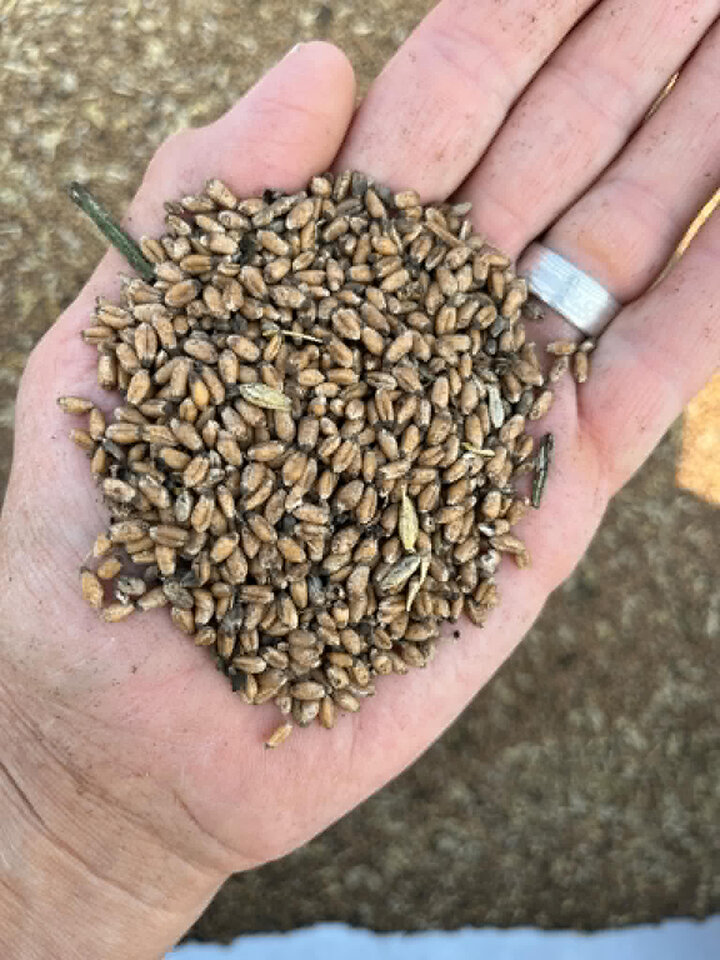Common bunt, also known as stinking smut, is caused by two closely related fungi. Tilletia caries, also known as Tilletia tritici, and Tilletia laevis. This year, I worked with a grower in Morrill County who had three full circles of irrigated winter wheat seriously infected with common bunt. Infection of wheat occurs during germination and is favored by cool, wet conditions. The first indication of a problem was a cloud of black dust following the combine and grain cart during combining.
Upon closer inspection, the wheat was darkened, dusty, and had an odd smell. Common bunt causes the wheat kernels to become filled with black, powdery spores that have an unpleasant odor, which deters livestock from eating it.

The fungi penetrate and infect the coleoptile — the tissue sheathing the first true leaf — before seedling emergence in the fall. The question arose from the grower as to how all three of his irrigated winter wheat circles were infected in the same year. In visiting with grain elevators in the area, common bunt wasn’t a serious issue this year, but there was quite a bit of it around the previous year. The grower had planted this year’s wheat from his own harvested wheat from the previous year, which evidently had a low-level infestation of common bunt. This infection of spores essentially inoculated the seed he planted this year, causing the infection in three circles.
The grower delivered the grain to the elevator with a large dockage and hoped the straw would be usable as cattle feed.
Using your own bin-run seed or buying it from a neighbor can lead to disease infections, such as bunt or other smut diseases, and can also be a source of undesirable weeds, such as jointed goatgrass or rye.
This fall, as you prepare to plant winter wheat, it is best to use certified seed, but if you are using your own seed, treat it with a fungicide.
Managing common bunt in winter wheat involves several key strategies:
- Use Resistant Varieties: Plant wheat varieties that are resistant or less susceptible to common bunt. Check with local agricultural extension services or seed suppliers for recommendations on resistant cultivars.
- Seed Treatment: Treating seeds with fungicides before planting can help protect them from common bunt infection. There are various seed treatments available, so choose one that is effective against common bunt.
- Crop Rotation: Implement a crop rotation plan to break the lifecycle of the fungus. Avoid planting wheat or other susceptible crops in fields where common bunt was a problem the previous year.
- Field Sanitation: After harvest, remove and destroy any infected plant debris from the field. This helps reduce the amount of fungal inoculum in the soil.
- Clean Equipment: To prevent the spread of the disease, ensure that all planting equipment and machinery are cleaned thoroughly before moving between fields.
By integrating these practices, you can reduce the incidence of common bunt and improve the health and yield of your winter wheat crops.

